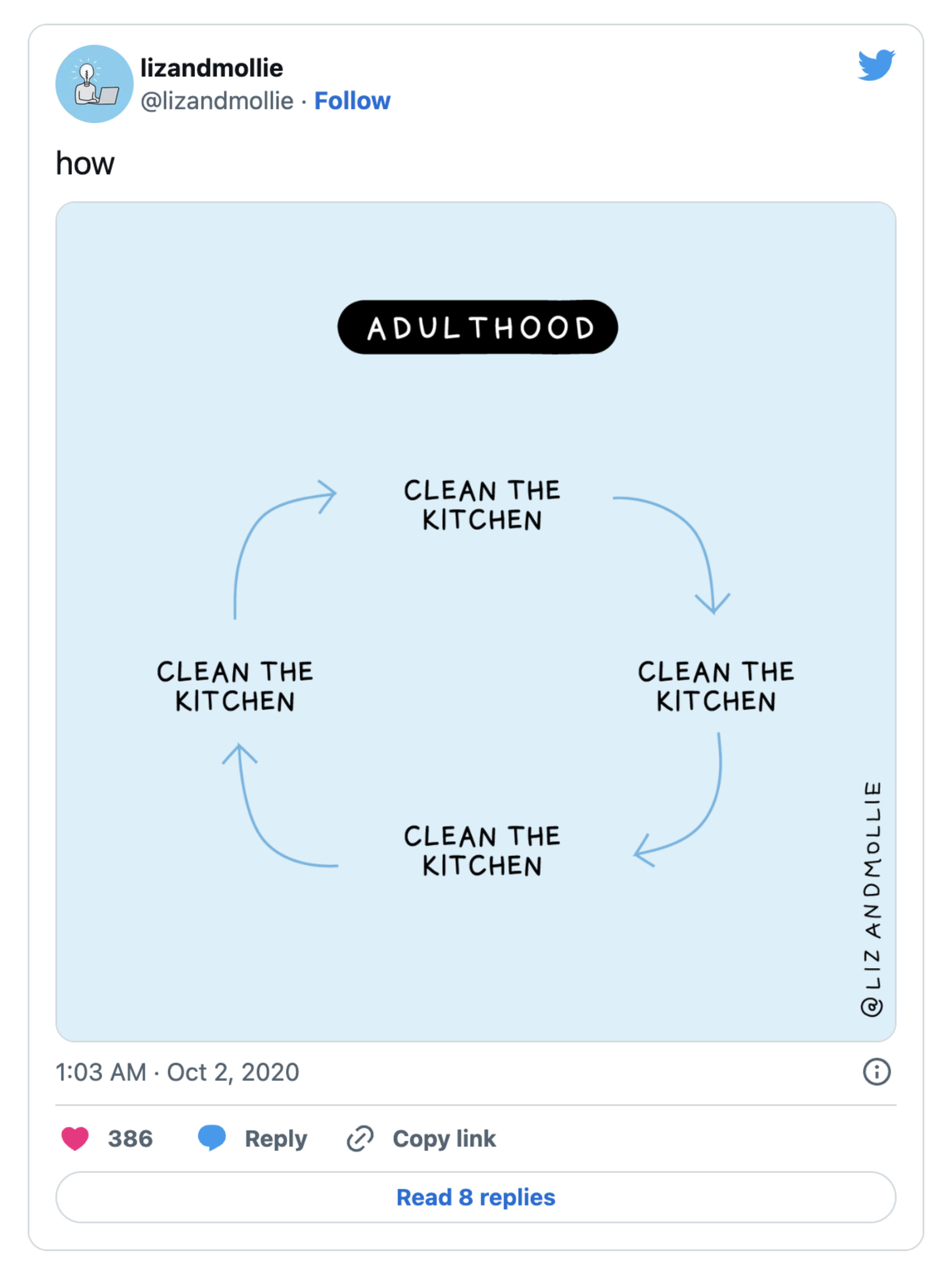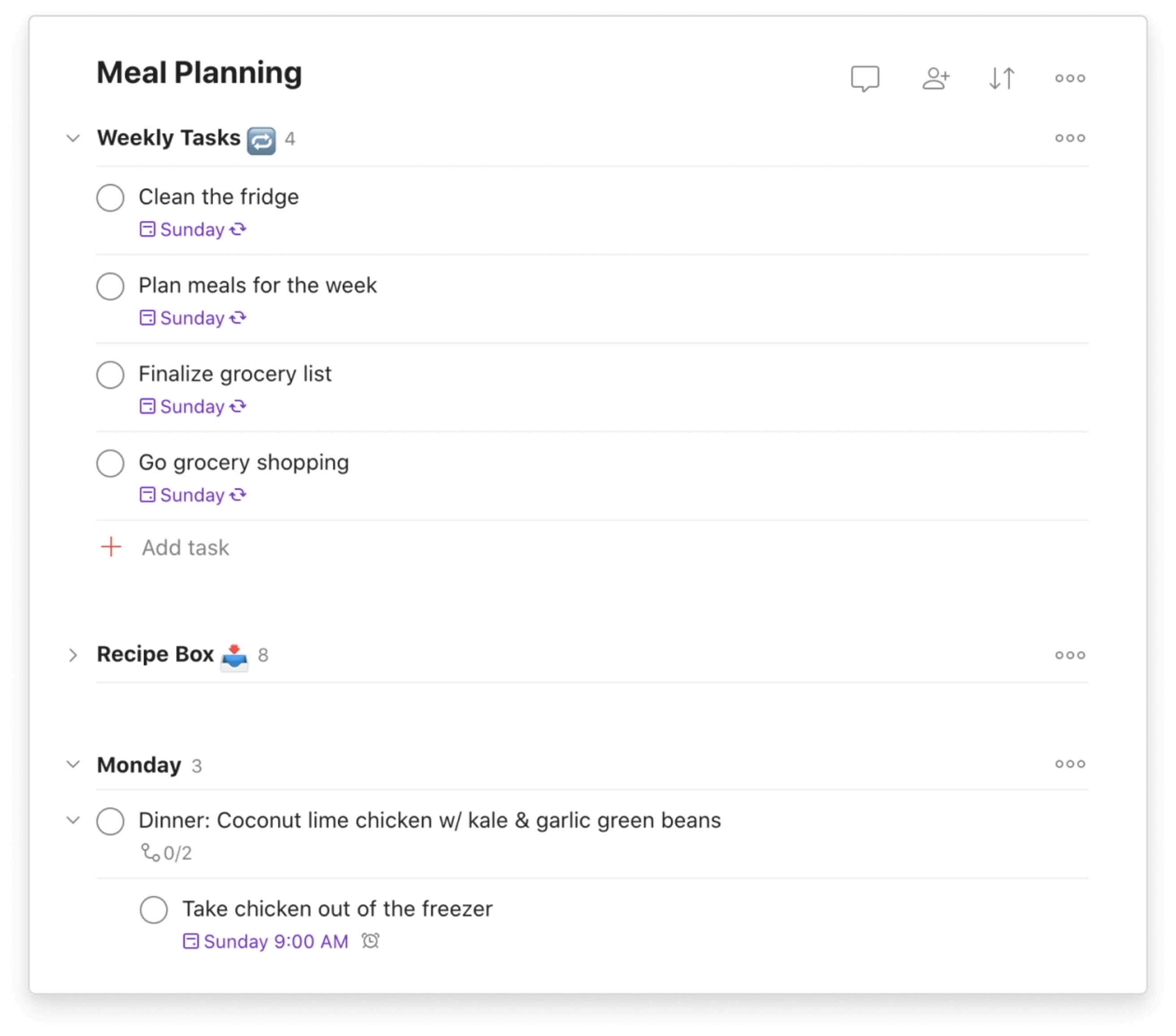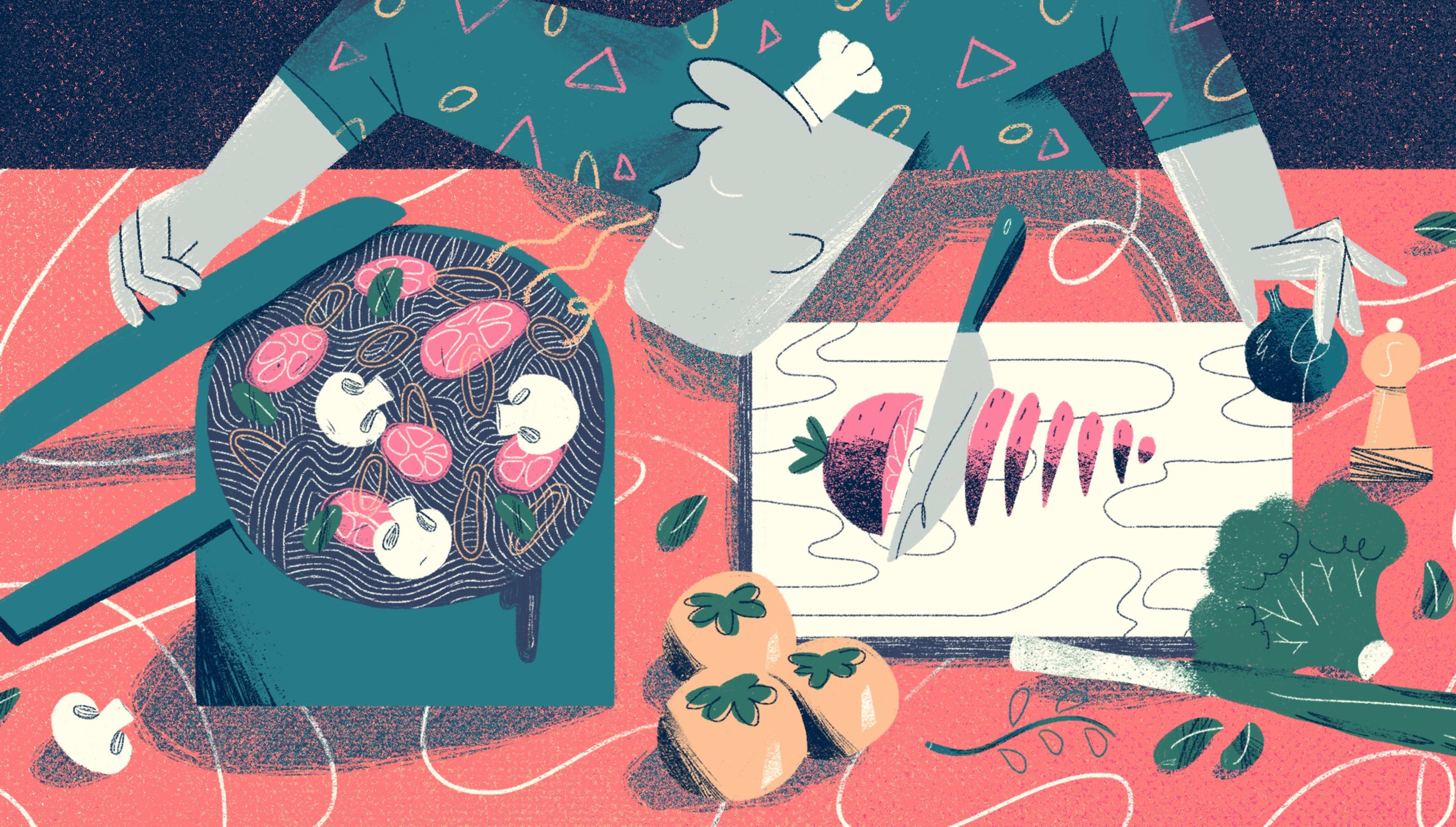Cooking at home is really freaking hard. Even with the modern-day miracles of boneless skinless chicken breasts and instapots, preparing your own meals requires an absurd amount of brainpower, logistics, and time.
You have to decide what recipes you’ll make, list out the ingredients you need, go to the grocery store to buy them, haul them all back home, put them all away, then find the time to combine them all into a meal before everything goes bad. Oh, and don’t forget to clean up afterward.

And after all of that work, what do you have to show for it? Cooking at home won’t win you accolades. It won’t advance your career. The results disappear in a matter of days, hours, or even minutes. It’s no wonder cooking falls to the bottom of our to-do lists.
From 2013 to 2016, an estimated 36.6% of American adults ate fast food on any given day. For adults between the ages of 20 and 39 – those most likely to be working and caring for small children – the number jumps to 44.9%. From 2007 to 2012, an estimated 60% of calories consumed in the U.S. come from ultra-processed foods that "are ready to drink, eat or heat up".
(If you’re curious, the study defined ultra-processed foods as products that are “manufactured mostly or entirely from substances derived from foods and several additives used to imitate sensory properties of foods or to disguise unpalatable aspects of the final product. They typically contain little or no intact foods...” Yum.)
Fast food and ready-to-eat dinners may have freed up a significant amount of our time, but they also started an epidemic of heart disease, type 2 diabetes, and a slew of other chronic health issues that make it harder to enjoy those extra hours. Convenience is slowly killing us.
Numerous studies have shown what you probably already know to be true if you clicked on this article: The less time we spend cooking at home, the worse our diets become. We can intermittently fast and count calories and debate the finer points of paleo vs keto until we’re blue in the face, but if we want to eat healthier, we can’t escape the fact that we have to make time for cooking.
I’d like to be someone who enjoys cooking for cooking’s sake, but I’m not, and I don’t. What I do enjoy is organizational systems and routines. If it’s your goal to cook more in 2024, here are the key things that helped me build and stick with a weekly cook-at-home routine for ~85% of the meals I eat.
Note
This blog post is part of our 2024 Goals Series. Achieve your goals in the new year with an accompanying step-by-step Todoist template to help you cook more at home. Achieve other aims like starting a side hustle, organizing your tasks, and disconnecting from technology (at least some of the time).
Subscribe to the Todoist Newsletter for upcoming articles including How to Organize Your Home, How To Organize Your Finances, and How to Read More Books delivered directly to your inbox!
Make a plan. You will eat something. The question is whether it’s going to be something you intentionally planned to eat, or the closest, easiest option. On Sunday mornings, I use Todoist to plan out meals for the week and make a grocery list. That way, I’ve already decided what I’m going to eat on any given day, and I’m not trying to make decisions while I’m tired and hungry after a day of work. You can download the Meal Planning and Grocery List templates I use and customize them to fit your needs.

This is the template I use to plan out my meals for the week.
Note
Todoist Tip: After experiencing too many chicken breasts gone bad by the end of the week, I’ve taken to freezing any meat I don’t cook immediately. I add a sub-task to the meal in Todoist to take the meat I need out of the freezer the morning before so I don’t forget.
Keep it simple. Repeat often. You don’t get bonus points for complexity or variety. The goal isn’t to be Martha Stewart. Don’t be afraid to repeat meals often, especially when you’re just getting into the habit of home cooking. I usually eat the same breakfast (sausage, spinach, and sweet potato breakfast bake) and lunch (some kind of chicken or tuna salad) every day during the week and add more variety to my dinners and weekends. I find that the repetition makes meal planning much less stressful.
Have 3-5 go-to recipes. The more you make a recipe, the easier it will become and the less mental resistance you’ll feel when you think about making it. Identify 3-5 recipes that are fast to make (30 min or less), relatively healthy, and reasonably edible. Fall back on these recipes as often as you need. I’ve included some ideas for go-to recipes in this Cooking at Home goal project template.

A step-by-step plan for cooking more at home in 2024.
Schedule it so it happens. When taking on new endeavors, we often skip a critical first step: figuring out how we’ll make time for them. We try to cram our new resolutions into a suitcase of commitments that's already straining at the seams, and then we feel guilty when it all comes apart. To make room for cooking, you’ll need to say no to other things. Time block meal prep on your calendar and keep that appointment with yourself.
Use your weekends wisely. A little bit of meal prep on the weekend will go a long way in making your week less stressful. I usually spend 1-3 hours on Sundays making one or two double recipes, chopping up veggies, and cooking up chicken breast to throw into salads and stir-fries throughout the week. I don’t cook everything I’ll eat for the week, but it’s a solid start. Some brave souls with large freezers even meal prep for a whole month at a time. You won’t be eating any gourmet meals this way, and you have to be willing to reheat a lot of leftovers, but you’re also guaranteed to have a home-cooked meal ready to go.
Motivate yourself with temptation bundling. I would love to say I cook in meditative silence, fully immersed in the present moment, but I have yet to reach that level of enlightenment. Generally, the only way I can motivate myself to start cooking is by putting on my favorite podcast or an audiobook or, at my lowest points, an old season of Love Island on my iPad.
Psychologists call this strategy temptation bundling – pairing a thing you like to do with a thing you don’t like to do. It can be a powerful way to jump-start any habit, but I’ve found it particularly effective for sticking to my cooking schedule (and upping the number of books I read at the same time).
Invest in the right tools. A sharp chef’s knife will save you time, frustration, and possibly even fingers. You don’t need a lot of gadgets to cook at home, but investing in a few basics will go a long way in making cooking easier and far more pleasant. I included a full list of kitchen basics along with links to brands I like for each in our Cooking at Home template. (We don’t make money from affiliate links. They’re just brands I genuinely like.)
Declutter your fridge weekly. Scary things happen in your fridge when you don’t declutter it regularly. I once found what I thought was an old lime in the back of my fridge until I read the sticker and discovered it was actually an even older lemon. A cluttered fridge filled with foodstuffs in various stages of rot makes it harder to find what you need, which in turn makes it harder to start cooking.
You'll notice I said declutter, not deep clean. Just set a timer for ten minutes, go through your fridge, get rid of anything that’s going bad, tidy up what’s left, and remind yourself what you need to use up soon.
Be realistic. You don’t have to go from getting takeaway for 90% of your meals to cooking 90% of your meals at home. It’s okay to start by committing to cooking just once a week. If you find you can handle one night, maybe add a second. The routine you’ll actually maintain beats the perfect routine every time.
Just open up the recipe book. You've done all the meal planning and grocery shopping. You know what you’re going to make, and you have all the ingredients, but you still need to do the actual cooking. This is the part I have the hardest time with. At the end of a long day, making a meal from scratch can feel impossible. But opening up a recipe book to the right page is easy. Preheating the oven to 425 degrees is easy. Getting the right ingredients out of the fridge is easy. You see where I’m going with this.
When you're exhausted, and the thought of making a meal is overwhelming, focus on just the first step. Starting has a way of creating its own momentum. As the writer E.L. Doctorow put it, "It's like driving a car at night. You can never see further than your headlights, but you can make the whole trip that way."
I’ve given up on trying to love cooking itself, but I have come to view it as not just a chore but a form of self-care. It isn’t easy, fast, or convenient, but it’s straightforward and satisfying after the fact. With so much uncertainty and ambiguity in the world, it’s nice to follow step-by-step instructions and be reasonably assured that I’ll arrive at the outcome I expect.
Ultimately, cooking is something I do for myself and my family because it makes me feel strong, healthy and capable. And the few hundred bucks it probably saves me every year is a nice bonus. My reasons for wanting to cook more at home in 2024 and beyond are probably different from yours.
Maybe the best piece of advice I can give for cooking more at home is to get clear on why you want to do it in the first place. The next time you feel too exhausted and busy to cook, think about those things and find a way to get started.

